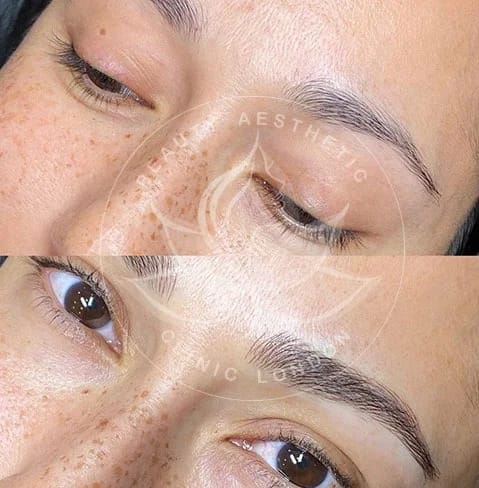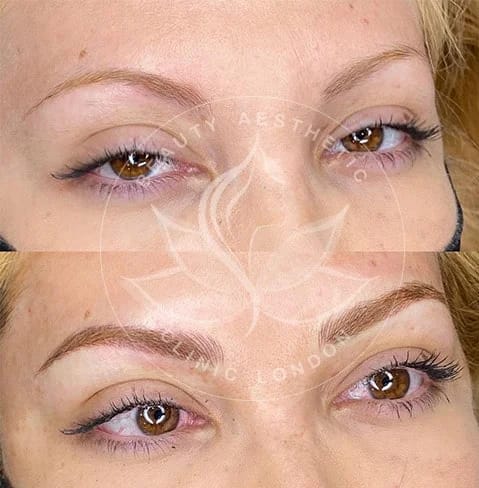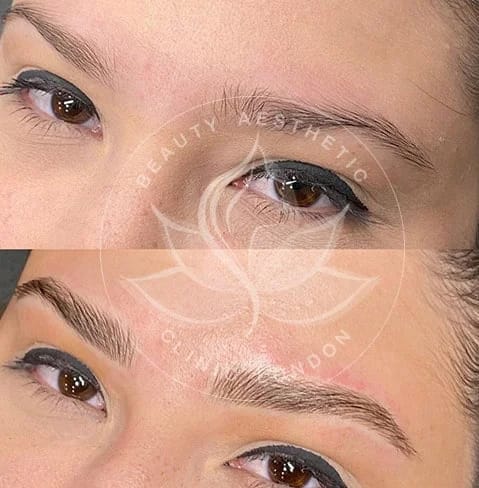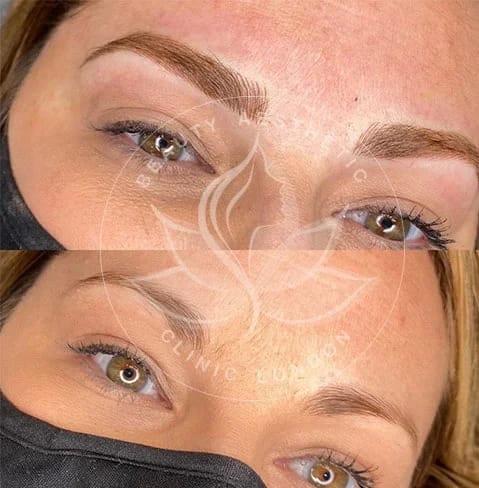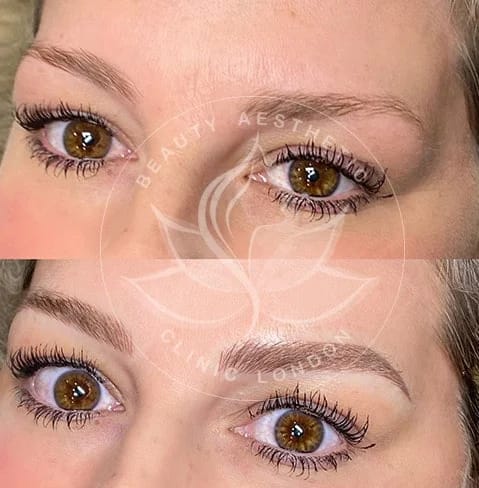The Importance of the Golden Ratio in Eyebrow DesignEyebrows play a significant role in framing the face and highlighting the eyes. Poorly shaped or uneven eyebrows can disrupt facial symmetry, which is why the application of the Golden Ratio is so beneficial in microblading. By adhering to this proportion, artists can design eyebrows that are not only well-balanced but also uniquely tailored to each individual’s facial structure.How to Apply the Golden Ratio in Microblading
1. Mapping the Eyebrows The first step in applying the Golden Ratio in microblading is to map out the eyebrows.
This process involves marking specific points on the face to determine the ideal starting point, arch, and ending point of the eyebrows. Here’s how the Golden Ratio is utilized in each of these steps:Starting Point: The eyebrow should begin directly above the inner corner of the eye, aligning with the side of the nose. This line is considered the first point of reference in the Golden Ratio.Arch: The highest point of the arch should align with the outer edge of the iris when the client is looking straight ahead.
This point is crucial as it defines the overall shape and lift of the eyebrow, contributing to the facial balance.Ending Point: The eyebrow should end at a point that aligns with the outer corner of the eye and the side of the nose. This final point ensures that the eyebrow tails off naturally, without extending too far or ending abruptly.
2. Measuring the ProportionsOnce the basic mapping is done, the next step involves measuring the distance between these points and ensuring they adhere to the Golden Ratio.
This can be done using a caliper or a specialized Golden Ratio tool. The ratio between the length of the eyebrow and the height of the arch should ideally match the Golden Ratio (1:1.618). This measurement guarantees that the eyebrows are proportionate to the face, enhancing natural beauty without appearing artificial.
3. Designing the Eyebrow ShapeWith the key points and measurements in place, the next phase is to design the actual shape of the eyebrows. The shape should flow naturally between the mapped points, following the curve of the brow bone. It’s essential to maintain the Golden Ratio during this process to ensure that the eyebrows are symmetrical and harmonious with the client’s facial features.
4. Executing the MicrobladingAfter the design is finalized, the microblading process begins. The artist uses a handheld tool to deposit pigment into the skin, following the pre-drawn lines. Precision is key, as the strokes must mimic natural hair and align with the Golden Ratio guidelines to achieve the desired outcome. The goal is to create a set of eyebrows that not only enhance the client’s appearance but also maintain a natural and balanced look.
The Benefits of Using the Golden Ratio in Microblading
Symmetry: The Golden Ratio ensures that both eyebrows are symmetrical, a critical factor in achieving a pleasing and natural appearance.
Facial Harmony: By adhering to this ratio, the eyebrows are perfectly proportioned to the client’s face, enhancing their overall facial harmony.
Customizability: While the Golden Ratio provides a template for ideal proportions, it can be adjusted slightly to accommodate individual preferences and unique facial features, allowing for a personalized result.
Long-lasting Results: Eyebrows designed using the Golden Ratio are likely to remain in style, as they adhere to classic proportions that have been considered beautiful for centuries.
Conclusion:
The application of the Golden Ratio in microblading is more than just a trend; it’s a scientifically-backed method that enhances the natural beauty of the client. By following the steps outlined in this guide, microblading artists can achieve outstanding results that are both aesthetically pleasing and customized to the individual. Whether you’re a professional in the beauty industry or a client seeking the perfect eyebrows, understanding the role of the Golden Ratio can help you achieve the best possible outcome in microblading.








